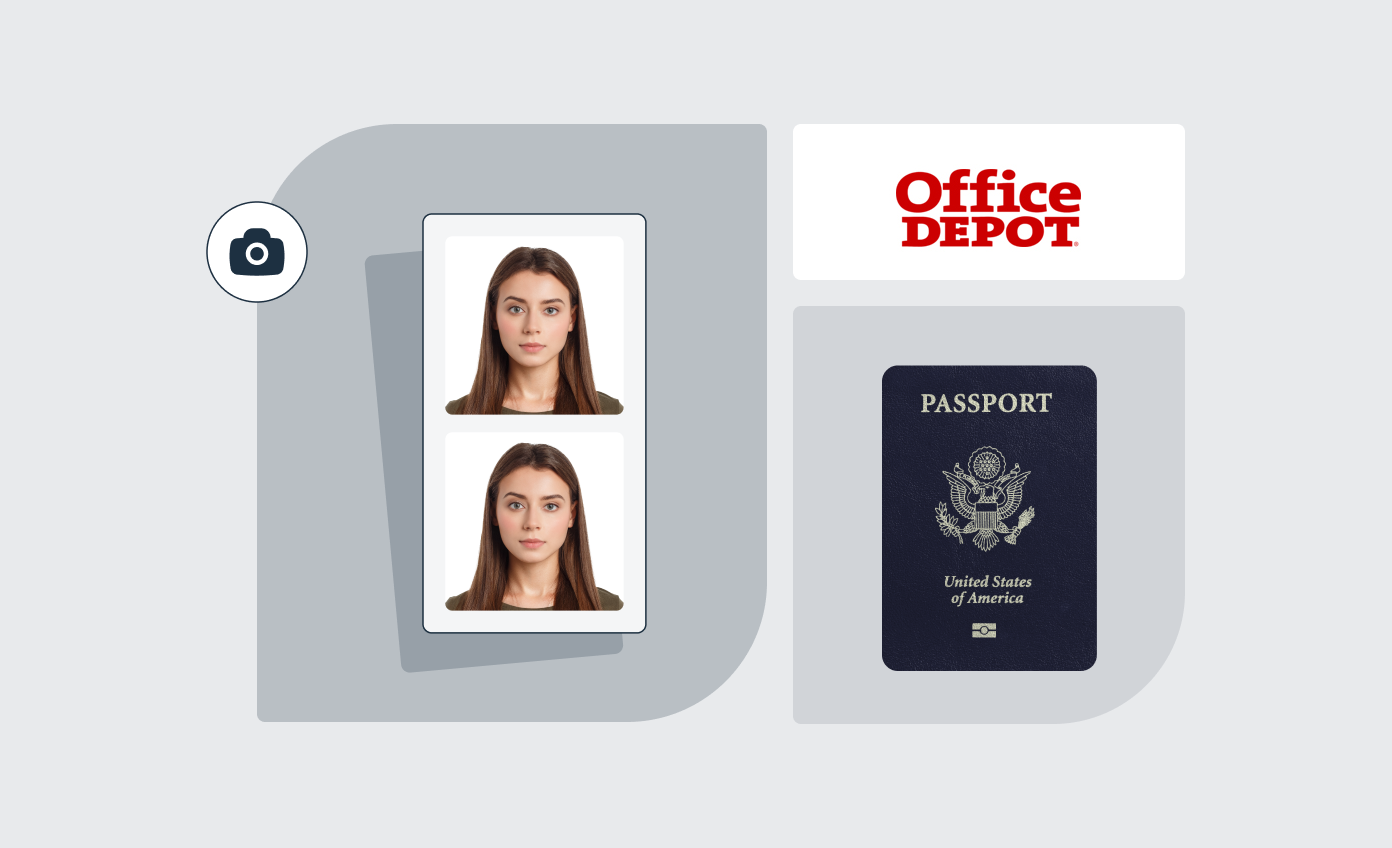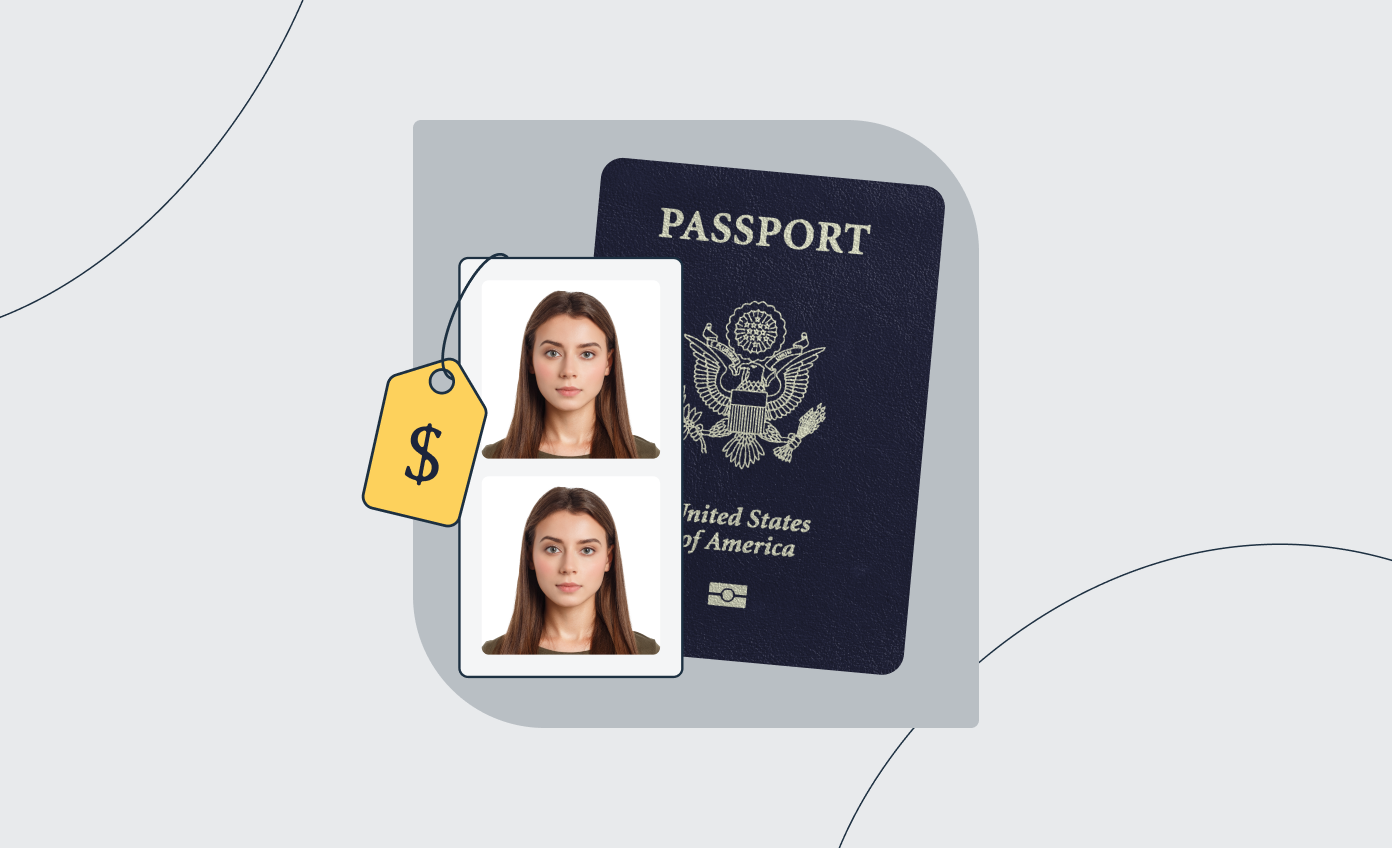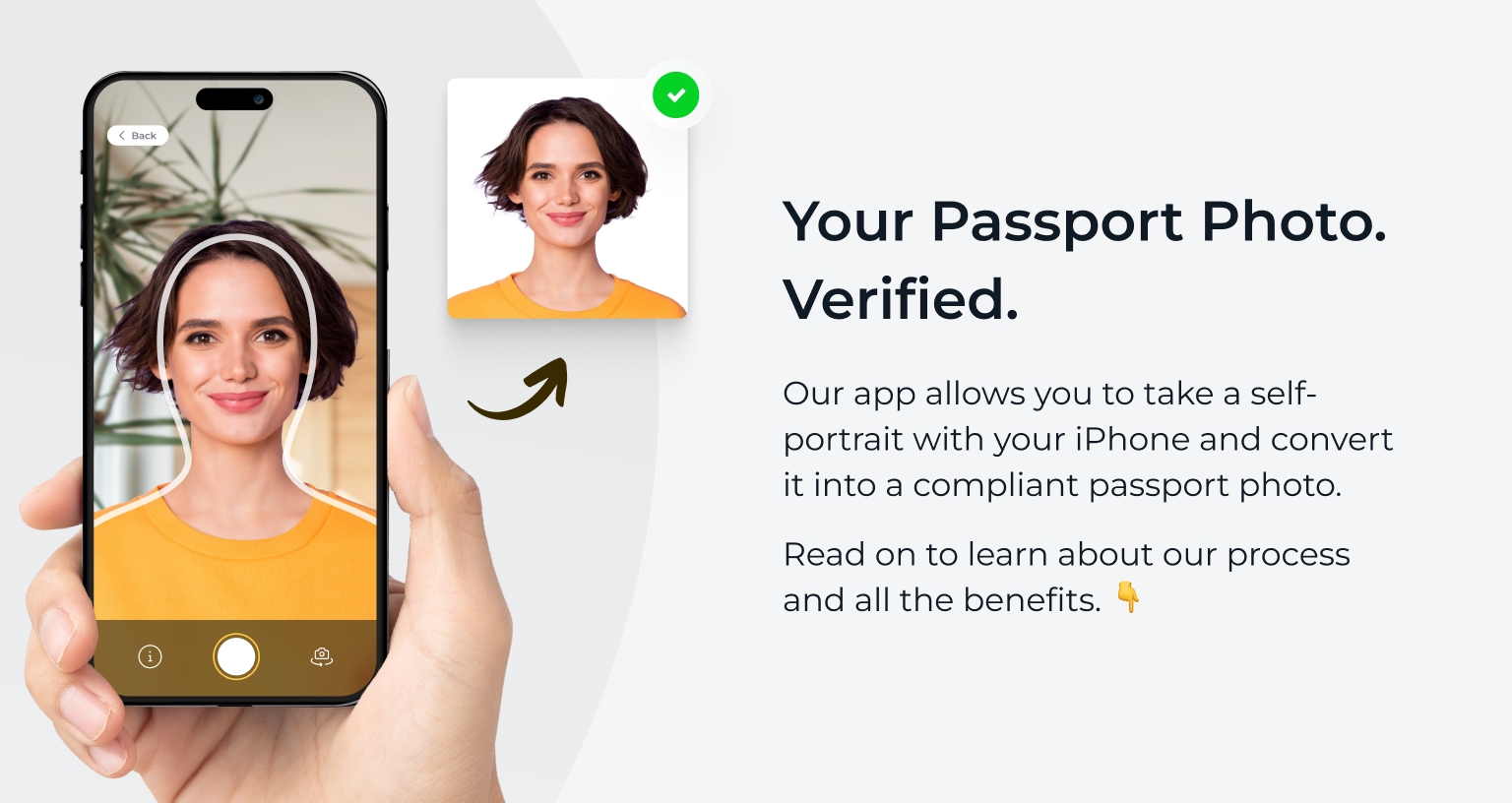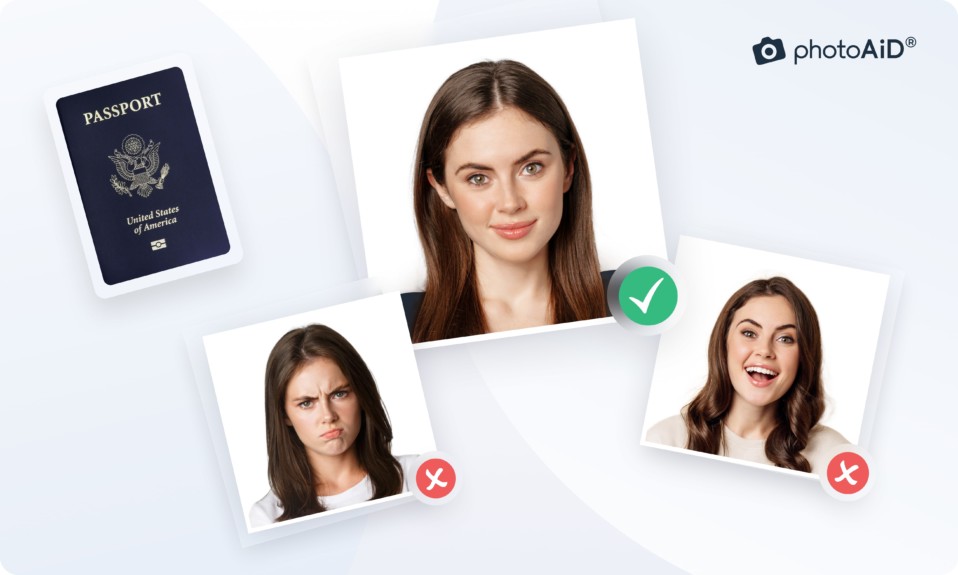If you’ve received a letter from the National Passport Information Center (NPIC) stating that your passport application is on hold due to an invalid photo, don’t worry—
Many applications are delayed for this reason, but the good news is that you have 90 days to submit a corrected photo.
Understanding why your passport photo was rejected can help you avoid common mistakes and ensure your next submission meets all official requirements.
Are you in a rush? You can take a 100% compliant passport photo that passport agents will accept.
Get a compliant passport photo in 3 minutes with PhotoAiD’s passport photo maker.
- Upload or take a photo.
- Let the PhotoAid Al check and fix it.
- A compliance expert will verify the result.
- Download or order a print. Done!


Get a digital passport photo or order prints with help from PhotoAiD®
100% acceptance, expert verified
2x money-back guarantee
3 minutes and done
11,000,000+ happy users
I was pressed for time and couldn’t get hold of a photographer. I found PhotoAiD, took a selfie, uploaded it, and had a compliant passport photo almost instantly. Getting a photo for my baby girl was a breeze, too!
Why Was My Passport Photo Rejected?
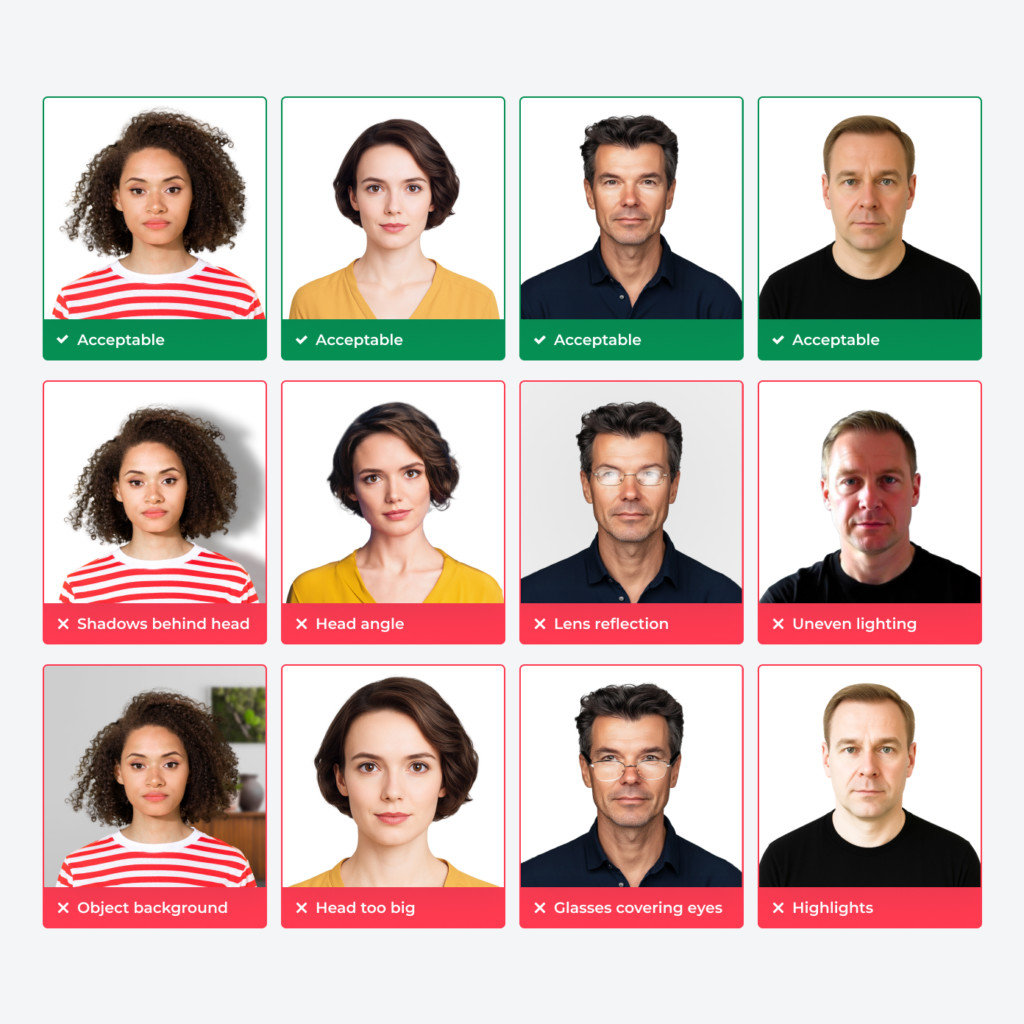
Passport photos must meet all official passport photo requirements of the US Department of State. If passport agents reject your photo, it means your application picture failed to meet one or more standards. The most common reason for a passport photo to be rejected is poor quality, which makes biometric facial recognition impossible.
However, it’s not the only reason. Let’s discuss what disqualifies a passport photo.
Incorrect size and head dimensions
US passport photos must be 2×2 inches (square ratio), and your head should measure 1–1⅜ inches from the top of your head to the bottom of your chin. Additionally, you should leave white spaces between your face and the image’s borders (on both sides and at the top).
✔️ Fix: Stand at least 20 inches (50 cm) away from the camera when taking a photo. When editing, don’t zoom in too much, and remember about the white spaces.
Incorrect background
Your background must be plain white or off-white without any imperfections. People often hang white sheets behind them, but the fabric will likely cause shadows and patterns (both are unacceptable). If you remove the backdrop yourself, ensure there’s no blur. Free tools often blur the outline around your head and hair.
✔️ Fix: If possible, take a photo in front of a white wall or use proper background removal software.
Poor lighting and shadows
Lighting should be even—no overexposure or underexposure. A passport photo must accurately reflect your natural skin tones, so it’s important to use neutral lighting (avoid taking pictures early in the morning or late in the evening). Shadows in passport photos are unacceptable.
✔️ Fix: Take a photo between 9 am and 1 pm in front of a window. You can also place three light sources—one in front of you and two on each side (at a ~45-degree angle).
Improper facial expression
You should maintain a neutral facial expression with your eyes open and mouth closed. Smiling in passport pictures is only allowed if it’s natural and subtle—no exaggerated expressions.
Swipe through these examples of passport pictures to see what yours should look like.
✔️ Fix: Smile gently by lifting the corners of your lips, or, to be safe, don’t smile at all.
Bad positioning
The position is crucial for your passport photo to be accepted. You have to sit (or stand) straight and look directly at the camera. You can’t tilt your head, and your face has to be in the center of the picture, taking about 50–69% of the image’s height. Additionally, the top of your shoulders must be visible in the frame.
Digital alterations
While tempting, any digital alterations will result in your photo being rejected. You can’t tweak the photo’s exposure, remove the red-eye effect, or enhance your appearance. Even removing minimal imperfections (unless done by a professional) or birthmarks won’t be accepted.
If a professional studio or any other provider offers to improve your complexion slightly (e.g., remove a pimple), ensure they don’t overdo it or refuse altogether.
✔️ Fix: Apply minimal makeup for the photo to ensure you feel comfortable and drop altering your passport photo in any way.
Unacceptable appearance
You have a lot of freedom regarding what you should and shouldn’t look like in a passport photo. However, if you don’t want to end up with a rejected passport photo, follow these guidelines:
- Passport photo dress code: Wear your usual clothes in darker colors and without patterns. Don’t wear white, camouflage patterns and uniforms.
- Hair: A good and safe passport photo hairstyle shouldn’t cover your face, eyes, and eyebrows. If your bangs obscure your eyes, your passport photo will be rejected.
- Religious headgear: Head coverings are generally not allowed. If you wear one for religious reasons, ensure your whole face is visible.
- Glasses: Remove your glasses unless you can provide a signed doctor’s statement.
- Makeup: You can use light makeup (opt for the makeup-no-makeup look). However, passport photos are often rejected if you change your appearance too much.
Want to learn more about the most common reasons ID photos get rejected? Read our study.
Rejected Infant Passport Photo: Common Reasons
Children are difficult to photograph, let alone when you need them to sit still. A child passport photo will be rejected if your baby:
- Laughs or cries: A completely neutral facial expression isn’t necessary, but your child still needs to look directly at the camera with their eyes open and mouth closed. Newborns can have slightly closed eyes.
- Holds an object: Your child must be the only subject in the photo. They’re not allowed to have any toys, pacifiers, or blankets with them.
Additionally, you’re not allowed to hold your baby for a photo. Your baby’s passport photo will be rejected if you or your hand are visible.
✔️ Fix: Take your child’s passport photo when they’re well-rested. Place your baby on a light-colored blanket on the floor. Our guide offers more tips on baby passport photos.
Rejected baby passport photos
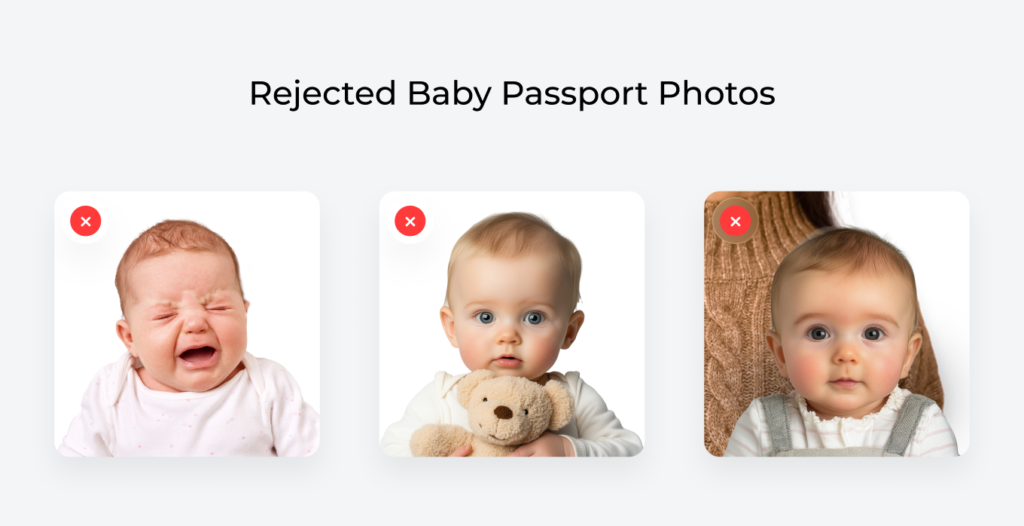
Examples of Rejected Passport Photos
Here are a few examples of US passport photos that will get rejected:
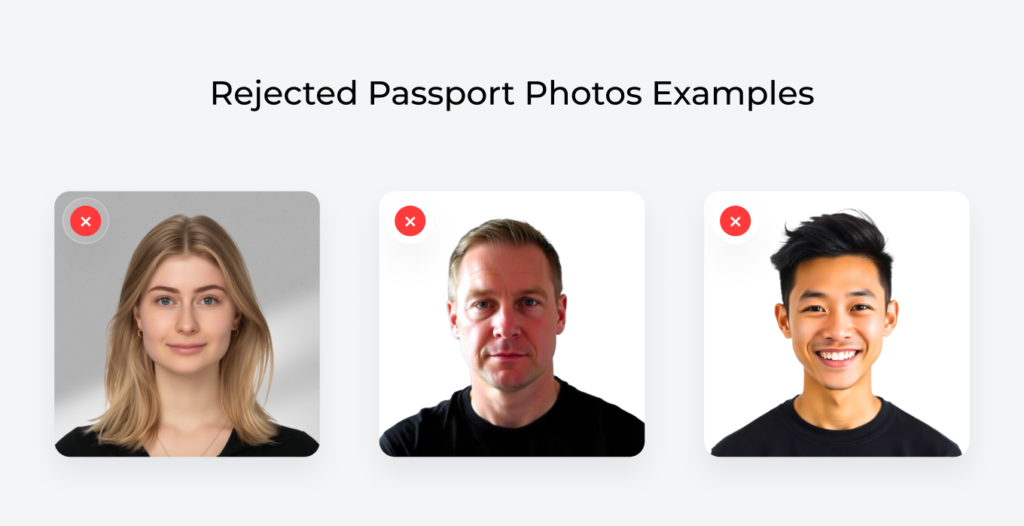
Passport Photo Rejected: What’s Next?
What happens if a passport photo is rejected? You must submit a new one that complies with the US State Department’s requirements within 90 days. Failure to do so will result in the cancellation of your application, requiring you to start over and repay all applicable fees.
So, you don’t have to pay again if your passport photo is rejected as long as you provide a new and compliant photograph within three months.
What to do if your passport photo gets rejected: Steps
- Retake your passport photo following the official guidelines.
- Use a professional service or an AI-powered passport photo tool to verify compliance before submission.
- Submit your corrected photo within 90 days.
Avoid Rejected Passport Photos With PhotoAiD®
We’ve got good news—you can take a passport photo at home and ensure it’ll be accepted. With PhotoAiD®, you can ensure your passport photo meets all government regulations.
Here’s how to take a correct photo:
- Take a picture.
- Upload it to our app (PhotoAiD for iOS or PhotoAiD for Android). You can also create a compliant passport photo in your browser.
- Wait for our advanced AI to resize, crop, and remove the background of your photo.
- Get your passport photo verified by one of our photography experts.
- Download a digital passport photo or order printouts.
We guarantee that if the passport office rejects your passport photos, we’ll give you a full 200% refund.
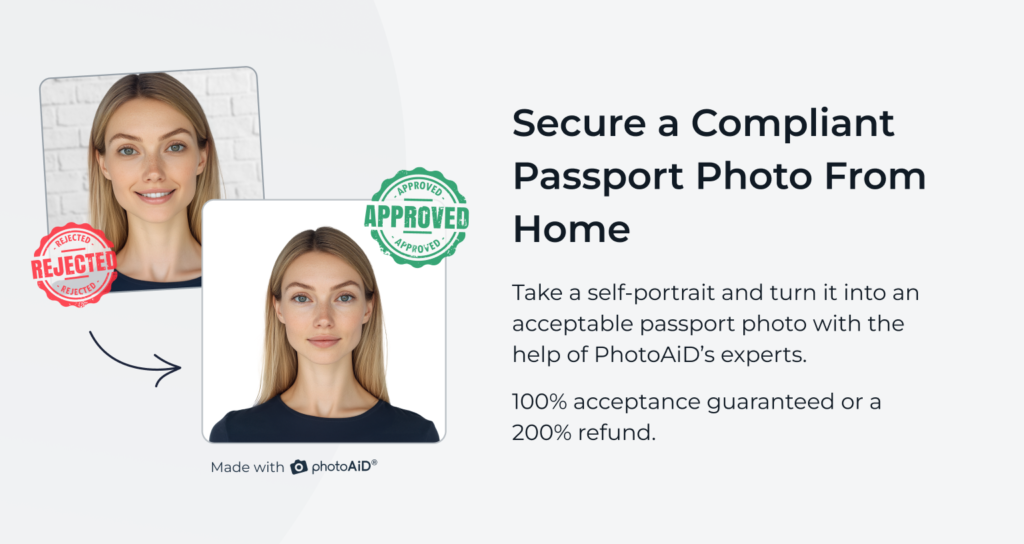
Rejected Passport Photo: Wrap-Up
Passport applications can sometimes be more complex than you think, and you should follow the requirements so images don’t get rejected. To save time and money, apply properly for your passport and take the best passport photo.
Finally, don’t sweat if your initial passport application gets rejected due to a non-compliant photo. You have 90 days to resubmit an appropriate passport photo that meets the State Department’s regulations.
FAQ
Read through the following questions carefully, they just might have the answers you seek.
Baby passport photo rejected—what now?
What happens if my passport photo is rejected?
The post office passport photo was rejected. Now what?
My online passport renewal photo was rejected. What now?
Will my passport photo be rejected if I smile?
My Walgreens passport photo was rejected. What now?
Sources:
https://travel.state.gov/content/travel/en/passports/how-apply/photos.html

Sylwia is a skilled writer with a BA in English Studies and an active SPJ member. For nearly three years now, she’s been writing captivating articles for international companies, turning her lifelong passion into a career.










